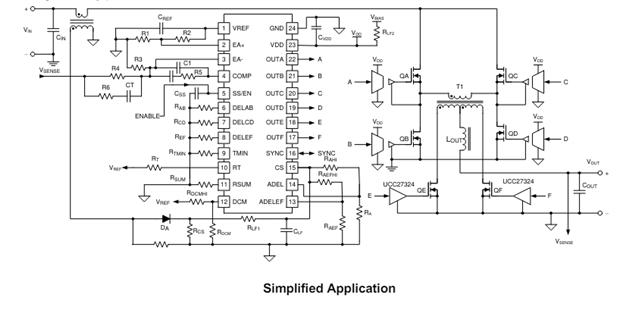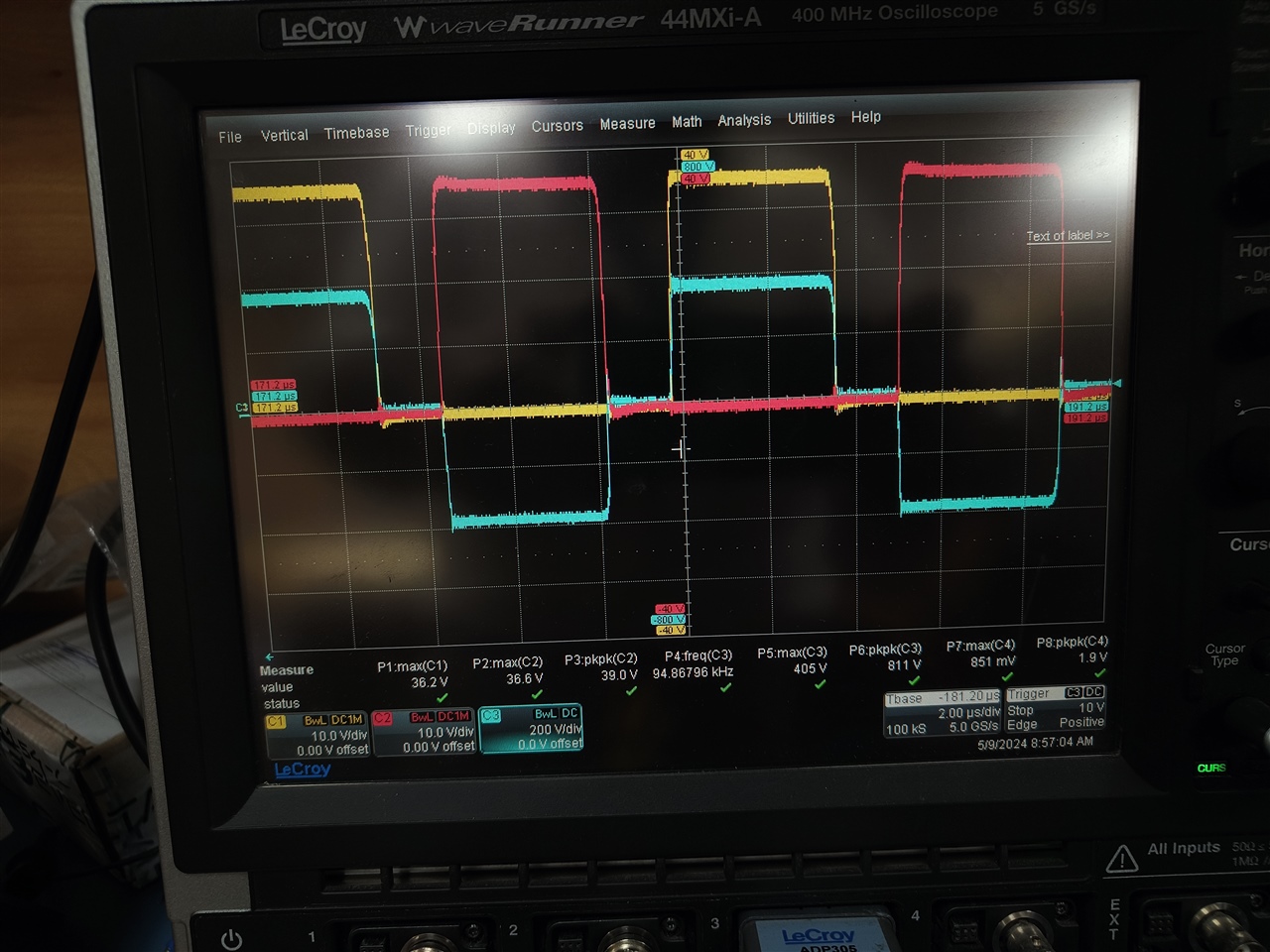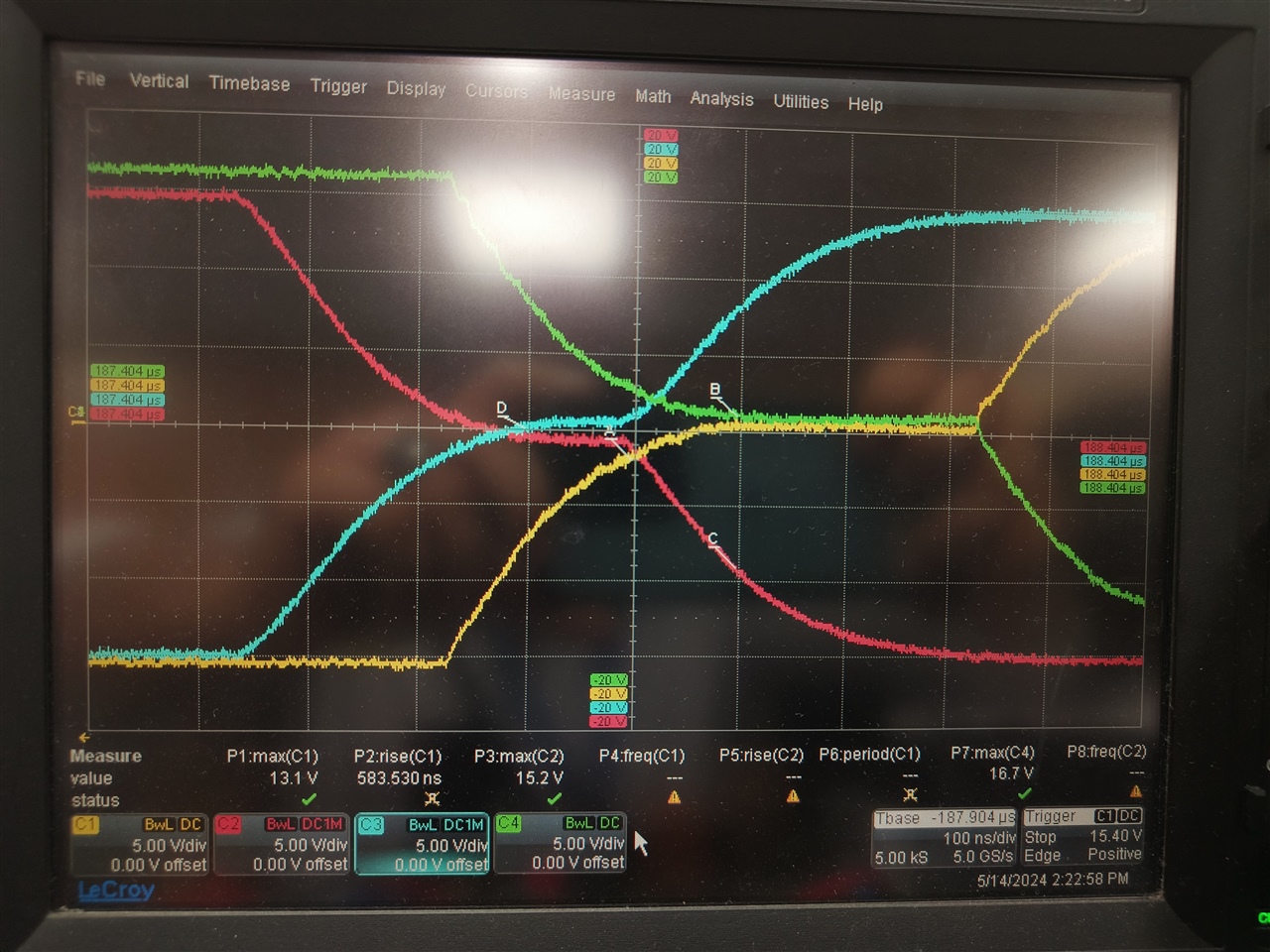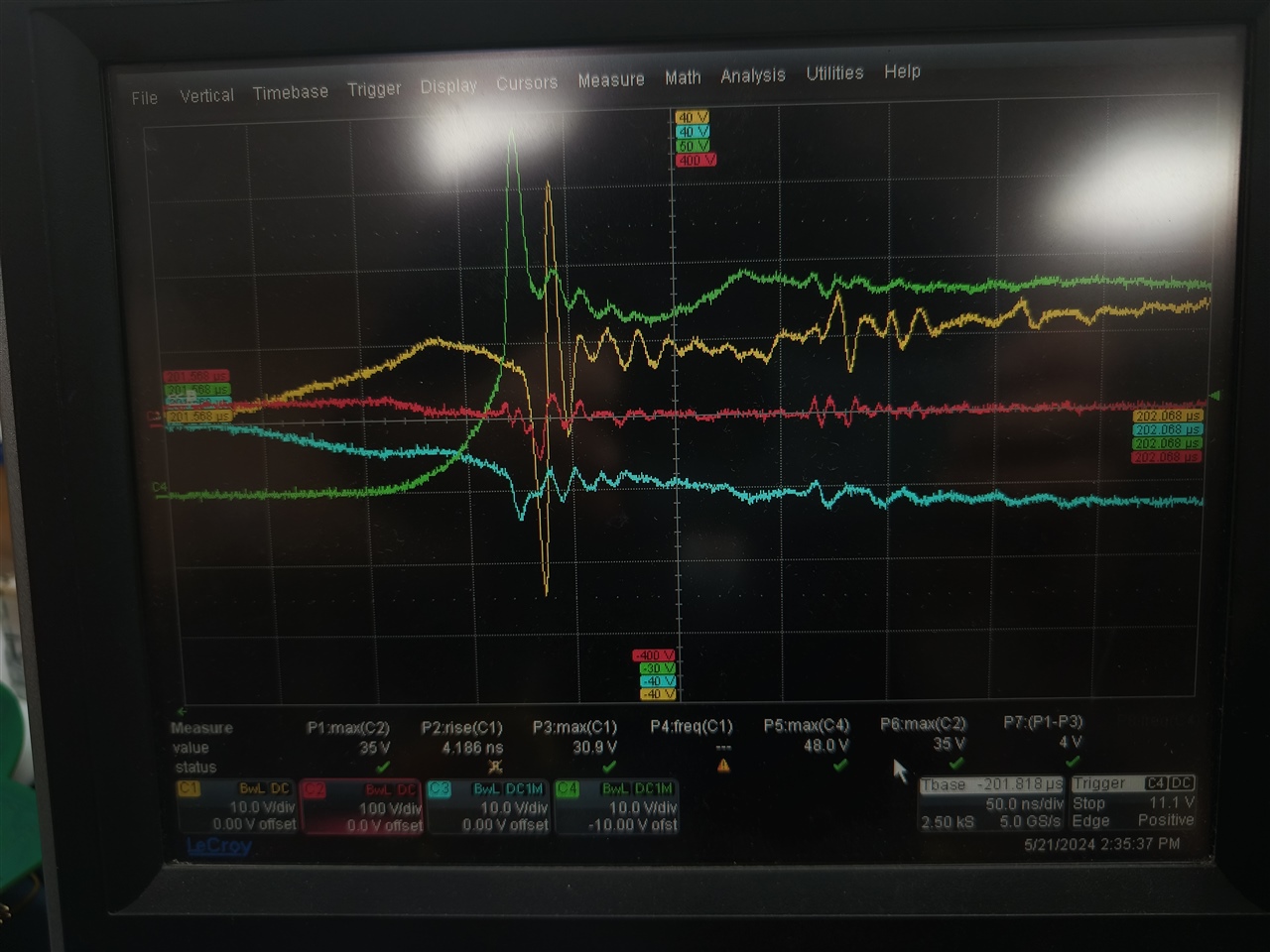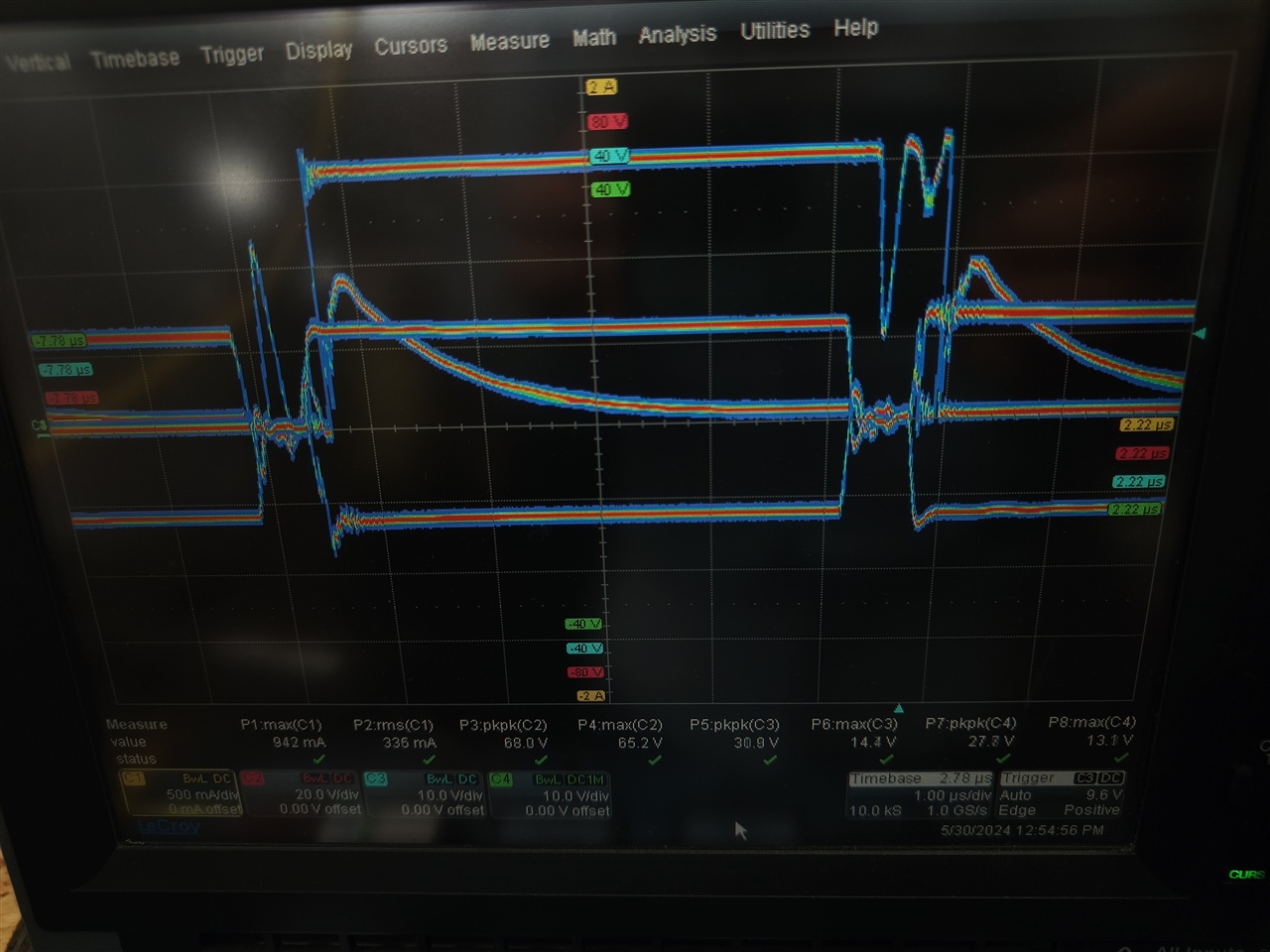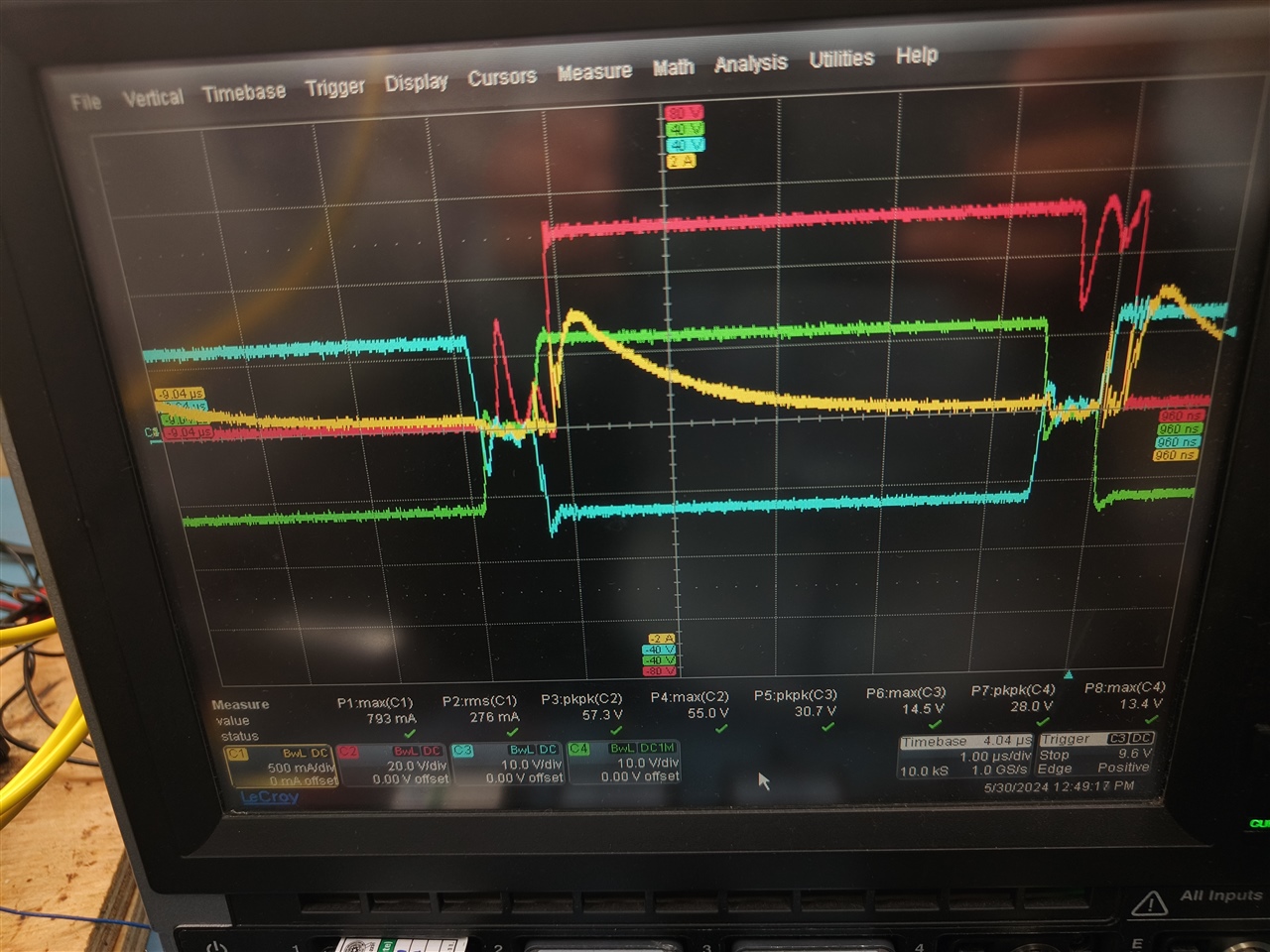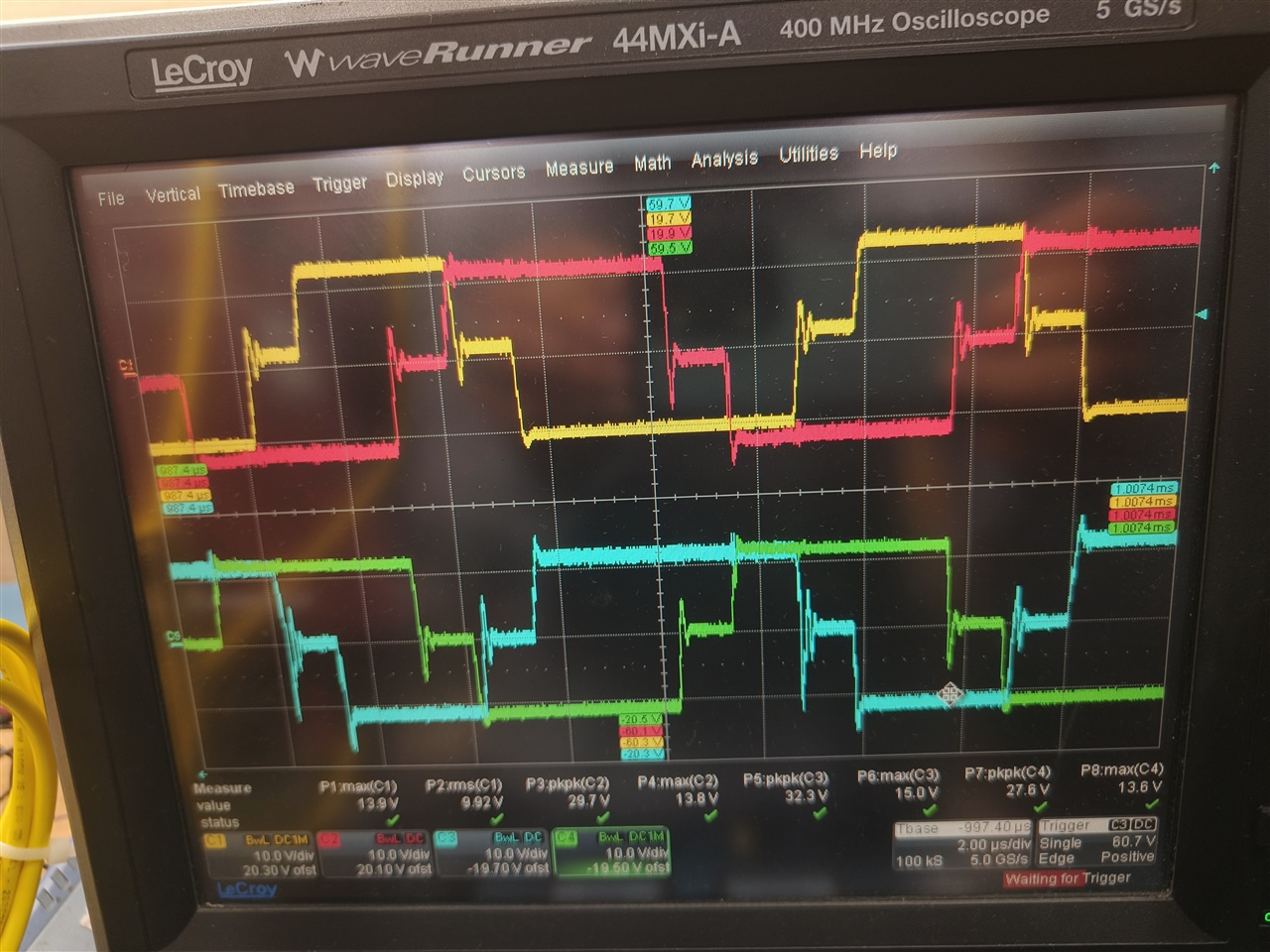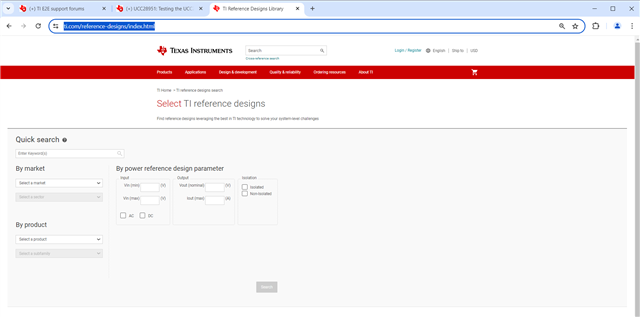Other Parts Discussed in Thread: UCC28950
Hi Mike O' / Team,
I want to start testing the controller (UCC28951) which is assembled on the PCB. I'm Preparing a Testplan to start Testing. Kindly guide.
I want to Start off With NO LOAD condition, then slowly give Load current in Linear order.
My Max Load current is around 80A. and Minimum is 2A.
Tmin Resistor: 13K. Should i further reduce Tmin resistor value or is this correct?
In the datasheet section 7.3.9(Burst Mode), It says, If the controller is still demanding a duty cycle less than TMIN, then the controller goes into shut down mode.
I'm Getting confused with the different modes of operation. As i Understand When the controller starts after SS/EN pin is released, the output voltage should be regulated with No load.
Then Let's say i give load current of 2A (it will be very light load conditions),
Then let's say I increase the Load current to 5A, it enters DCM mode or still be burst mode?
Further Increasing (Approx 10A in my case) less than 15% of load current which is huge as the FET diodes will heat up, It Will stay in DCM mode. Correct?
More than 15% of load current, The Controller enters CCM mode. I want to understand Whether my understanding of operation is current and what Tweakings / Value changes i may need to do while testing? Please guide.
Find the circuit diagram Below.










